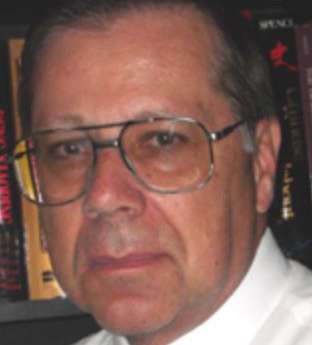
By JOHN RICHARD SCHROCK
Why does it take so long to get back results on COVID-19 testing? And why are some tests not accurate?
The FDA has approved two types of tests related to COVID-19: molecular tests and antigen tests. To test if you currently have the virus requires the molecular test. To determine if you had the virus in the past can usually be detected with an antibody test.
To determine who is infected with the virus right now and could possibly be shedding the virus to others, whether they have symptoms or not, requires the molecular test. Since the virus is shed and spread mostly in air droplets, the sample collection involves inserting a “nasopharyngeal swab” to the back of a person’s nasal passage for several seconds to collect a fluid sample. The sterile swab has a long, flexible shaft of plastic or metal. The tips are made of polyester, rayon, or flocked nylon. Short cotton-tipped swabs are useless.
Molecular tests identify the special genetic material of a virus by using a reverse transcriptase polymerase chain reaction (RT-PCR) that takes time. After the sample is taken, the swab has to be preserved in a liquid-filled tube for transport. There will be a considerable amount of other harmless sequences in the sample. Lab technicians combine a small amount of the sample with a lysis buffer that breaks open cells that might be virus-infected. This allows any viral RNA to be extracted.
Because Chinese researchers early-on determined the RNA sequence of the virus, a technician can extract the viral genetic material (an RNA) and use it to produce a complimentary strand of DNA that the PCR technique then amplifies inside the RT-PCR machine to produce thousands of copies that can then be detected. Different test kits may target different coronavirus genes.
A special fluorescent chemical for the genes in the coronavirus is now added to the test. Most current tests now use more than one agent to tag several target coronavirus genes. If the coronavirus genes are present in the sample, the RT-PCR process will turn on this fluorescence and it will get brighter as more coronavirus genes are amplified. While this “glow” is too faint to be seen by humans, the machine can record the spikes on a data graph as it gets brighter. If the patient does not have the virus, there will be no genes amplified and no spikes in fluorescence.
Obviously, this process takes time and requires a lab with RT-PCR equipment. If a person tests positive, they are shedding the virus and need to isolate. After a person recovers, they will test negative.
Antibody testing is completely different. Antibodies are the immune chemicals we produce to become immune to a foreign agent. Also known as serology testing, this is done after recovery from COVID-19.
Usually a health care worker takes a blood sample by finger prick or by drawing blood. The sample is then tested to determine if you have antibodies against the virus. That means that you were infected with the virus in the past, whether you expressed symptoms or not. It suggests that you now have some immunity. In contrast to the nasal swab test, a positive result means you are likely safe to go out and perhaps safer working in intensive care units, etc. While this is usually the case with antibody tests for other agents, there is not yet solid evidence that detected immunity levels protect against reinfection. It is possible that persons who lacked symptoms had mild infections and produced a low level of antibodies.
Ongoing research using survivor’s blood plasma with antibodies to treat severe cases should clarify this problem. Antibody tests are also important to survey a population to discover how widespread an infection was.
Testing for antibodies while a person is just beginning to be infected will not likely give a positive result because there was not enough time to build up antibodies.
In all testing, the critical factors are the false positive rates (the test shows you are sick but you are not) and the false-negative rates (the test says you are healthy but you are sick). And these rates will take time to confirm.
. . .
John Richard Schrock has trained biology teachers for more than 30 years in Kansas. He also has lectured at 27 universities in 20 trips to China. He holds the distinction of “Faculty Emeritus” at Emporia State University.





